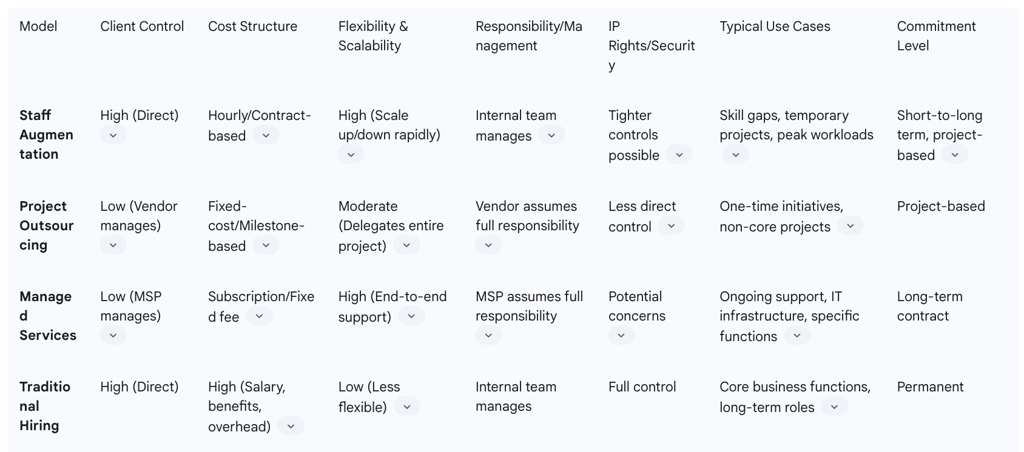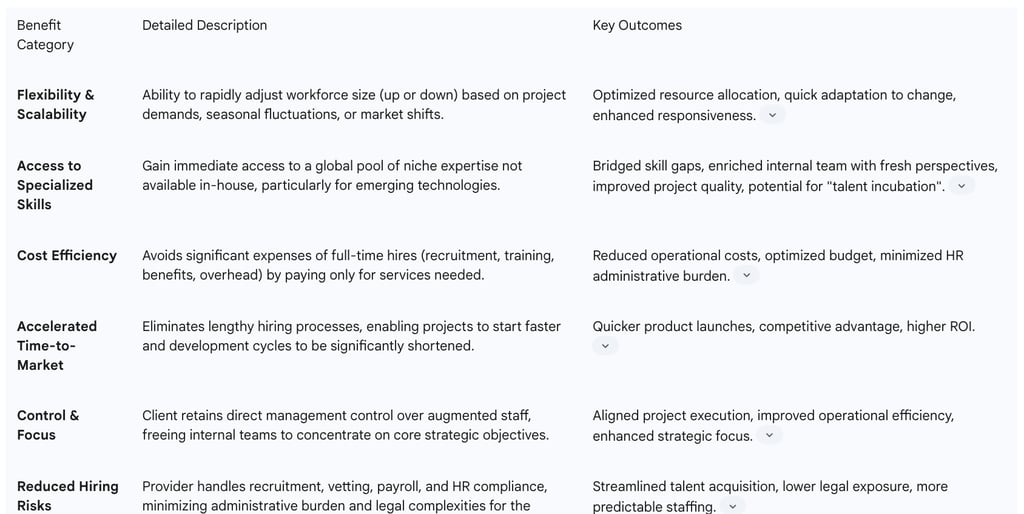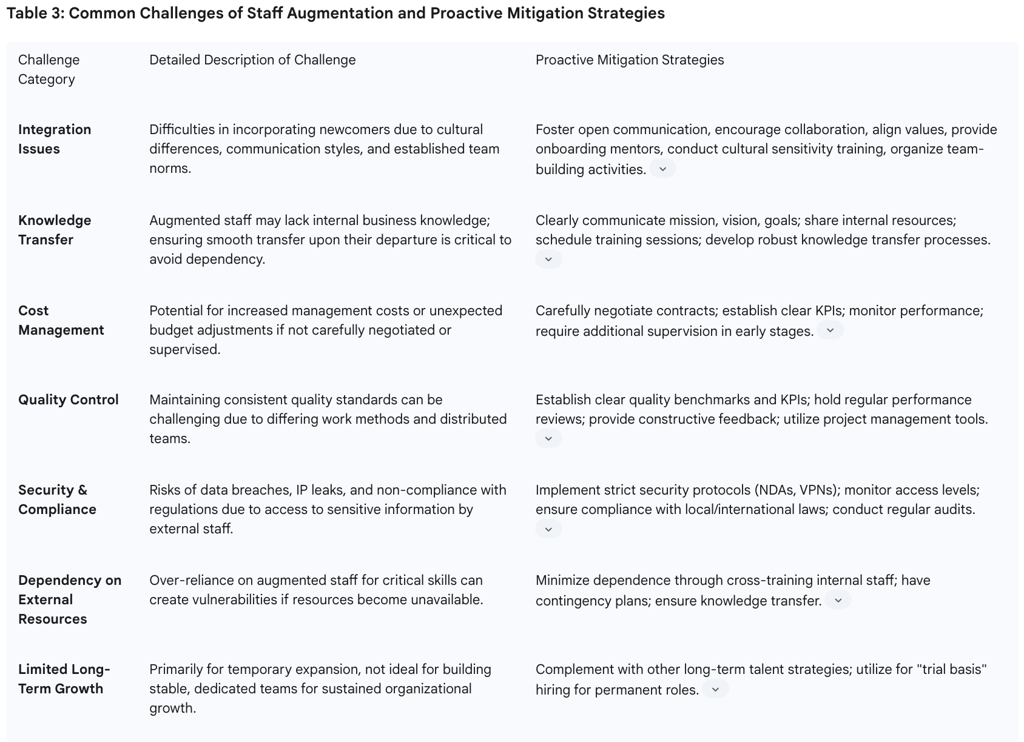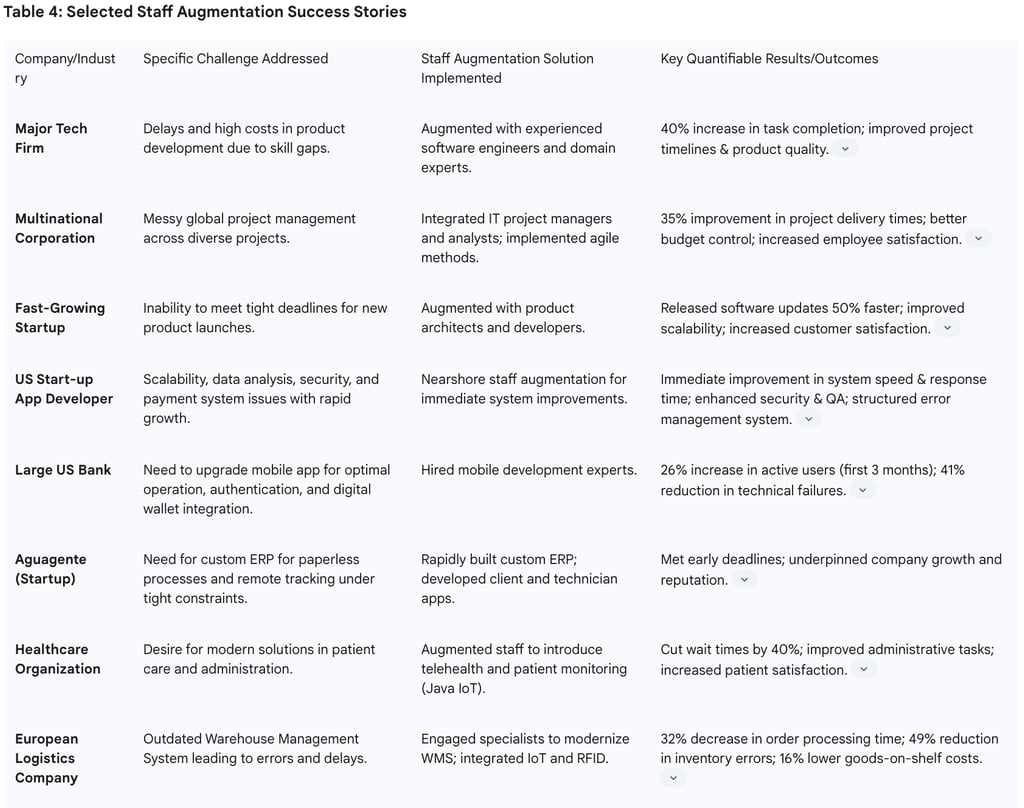Unveiling the Power of Staff Augmentation: Unleashing Modern Business Transformation
Unlock 🔓 the full potential of staff augmentation for your organization with our in-depth guide 📚. Learn why this innovative approach is a game-changer 🚀 for today's businesses. Our manual 📘 equips you with all you need to harness its many benefits 💡.


Staff augmentation represents a flexible and dynamic staffing model that enables organizations to integrate external, specialized talent into their existing teams on a temporary or project-specific basis. This approach is rapidly emerging as a critical strategy for modern businesses navigating the complexities of dynamic market conditions and rapid technological evolution. The model is pivotal for accelerating digital transformation, enhancing organizational agility, fostering innovation, and optimizing resource allocation without the long-term commitments typically associated with traditional hiring. This report will demonstrate how staff augmentation empowers organizations to bridge critical skill gaps, achieve significant cost efficiencies, and accelerate time-to-market, thereby unleashing profound business transformation and securing a decisive competitive advantage in today's global economy.
1. Understanding Staff Augmentation: Core Principles and Mechanics
Staff augmentation is a strategic approach to talent acquisition that has gained considerable traction across various industries. At its core, this model involves the temporary addition of external personnel to an existing team, providing specialized skills necessary to complete a specific project or task. This mechanism grants businesses on-demand access to critical expertise and resources without necessitating a long-term commitment to full-time hires.
The fundamental characteristic of staff augmentation lies in its integrated nature. External professionals, often sourced through third-party staffing agencies, are seamlessly integrated into the client's existing work framework. They function as an extension of the in-house workforce, collaborating directly with internal teams and contributing to project objectives. A distinguishing feature of this model is the client organization's retention of direct control and oversight over the augmented staff's daily tasks, priorities, and overall project execution. This level of direct management ensures alignment with internal methodologies and strategic objectives, providing a significant advantage for businesses that prioritize operational authority.
Furthermore, staff augmentation is inherently flexible, scalable, and designed for cost-effectiveness, particularly when addressing short-term needs or specific skill gaps. Its temporary nature allows for the rapid scaling up or down of teams based on fluctuating project demands, offering a responsive solution to dynamic business environments. This adaptability is further enhanced by the ability to source talent from a vast global pool, encompassing onshore, nearshore, or offshore professionals, ensuring access to a wide array of specialized capabilities.
How Staff Augmentation Works in Practice
The implementation of staff augmentation follows a structured process designed to optimize resource deployment and project success. The initial phase involves a clear assessment of specific skill gaps or roles that are currently missing within the existing team. This critical step requires outlining precise project goals, expected outcomes, timelines, and deliverables, ensuring a shared understanding of the project's direction and requirements.
Following this needs identification, the next crucial step is the selection of a reputable and experienced staff augmentation partner or talent source. This partner plays a vital role, as they are responsible for vetting and providing qualified candidates who possess the requisite skills and experience. Once selected, the augmented staff undergoes an onboarding and integration process into the client's existing work framework. This involves clearly defining all roles and responsibilities, providing access to necessary tools and systems, and actively fostering a cohesive team environment through collaboration and knowledge sharing. Finally, continuous management and support by the client's internal team are essential to ensure project alignment and successful execution. Regular performance monitoring and feedback loops are also integral to this ongoing process, ensuring optimal output and addressing any challenges promptly.
Distinction from Other Talent Acquisition Models
To fully appreciate the strategic utility of staff augmentation, it is beneficial to differentiate it from other prevalent talent acquisition models.
Staff Augmentation vs. Project Outsourcing: While both models involve leveraging external resources, their operational dynamics differ significantly. Staff augmentation integrates external talent directly into the client's team, thereby allowing the client to maintain direct control over project execution and daily management. Project outsourcing, in contrast, delegates an entire project to a third-party vendor, who then assumes full responsibility and control over deliverables, often operating under fixed costs but with considerably less client influence over the intricate details of the project's progress. This difference in control is a critical strategic consideration for many organizations, as it allows them to enhance capabilities while retaining core operational authority and ensuring alignment with internal methodologies and objectives. This deep need for control suggests a maturity in how businesses approach external talent, moving beyond simple task delegation to integrated capability enhancement.
Staff Augmentation vs. Managed Services: Managed services involve assigning specific functions, such as IT infrastructure or cybersecurity, to an external provider for end-to-end management. This model typically offers less client control over daily operations and can incur higher costs for comprehensive, ongoing support. The provider operates more independently, focusing on service level agreements rather than direct team integration.
Staff Augmentation vs. Traditional Hiring: Staff augmentation presents a flexible alternative to permanent hiring, circumventing the long-term commitments, extensive recruitment processes, and significant overhead costs associated with full-time employees. These overheads include salaries, benefits, training, office space, and HR-related paperwork. Staff augmentation allows for rapid access to talent and quick scaling, whereas traditional hiring is a lengthier, more costly, and inherently less flexible process. The repeated emphasis on the temporary nature, combined with the concept of seamless integration, reveals a deeper strategic implication: staff augmentation is designed to be a highly adaptable, "plug-and-play" solution. In today's rapidly changing business landscape, where project demands and market conditions fluctuate unpredictably, the ability to quickly integrate specialized talent and then scale down without long-term commitment is invaluable. This represents a strategic shift from rigid, fixed organizational structures to more fluid, project-centric team compositions. Companies can optimize human capital utilization by acquiring talent precisely when and for how long it is needed, thereby minimizing idle capacity and maximizing responsiveness to market shifts.
Table 1: Comparative Analysis of Talent Acquisition Models








